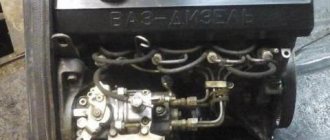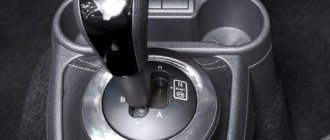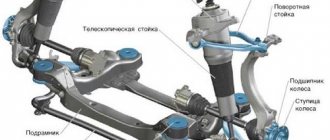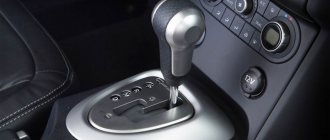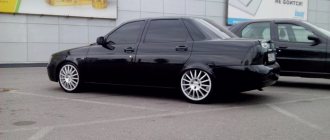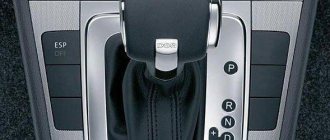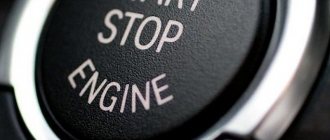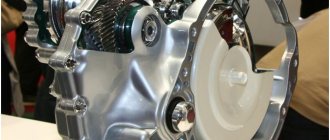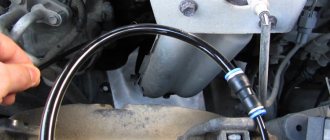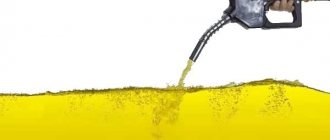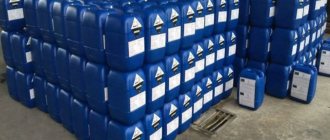Runflat what is it? In short, runflat tires are a special type of tire equipped with reinforced sidewalls made from wear-resistant materials. RunFlat technology (some also call it “runflat”) has both advantages and disadvantages.
We'll talk about this in more detail later. Now it is worth noting that they are produced by many foreign concerns. An additional section will list popular tires made using this technology.
4 main reasons for increased tire wear: how to save tires
Run Flat
A tire puncture is a common problem that often occurs on Russian roads. For many drivers, solving this problem is not very difficult: just install a spare tire and drive to the nearest workshop. However, there are situations when this is quite problematic. For example, not every girl can install a spare tire on a car. In addition, two tires are often damaged at once. It is to solve such situations that the RunFlat technology was created. It allows you to continue driving even if the tire is flat or there is a loss of pressure due to a puncture. Like any development, RunFlat has its own characteristics, advantages and disadvantages. You will learn about all the important nuances of the technology from this article.
How do different manufacturers label run-flat tires?
Automakers use different designations for hardened tires. All runflat tires on BMW, Rolls-Royce, Mini cars are marked with the letters RSC (RunFlat System Component). Mercedes-Benz uses the designation MOE (MOExtended), and on the tires of some Audi models you can see the abbreviation AOE (Audi Original Extended).
Bridgestone runflat tires can be identified by the RunFlat Tires (RFT) designation. Michelin calls this technology Zero Pressure (ZP), Continental calls it Self Supporting Runflat (SSR), Goodyear and Dunlop call it Run On Flat (ROF), and Nokian calls it FlatRun. There are also abbreviations ZPS, SSS.
Example of marking of self-supporting tires
Runflat what is it?
Translated into Russian, Run-Flat literally means “flat ride.” This technology allows you to drive further even if the tires puncture. Run-flat tires differ from conventional tires in the following ways.
- Wide side ring with additional reinforcement.
- Rubber resistant to high temperatures.
- Durable sidewall.
- The presence of amplifiers in the frame.
Thanks to these features, run-flat tires do not sag under the weight of the car in the event of a puncture in the tread, as conventional tires do. The reinforced sidewall and other RunFlat elements do not allow the rubber to jump off the rim and keep the car moving straight.
And in the end
The concept of run flat technology has good intentions. After all, ideas that work to improve road safety must be developed and improved. However, so far the tires have several disadvantages that prevent the technology from being fully applied. Development is also hampered by the lack of widespread infrastructure. Therefore, now such tires are among the safest, but you rarely see them on the road.
The first and main point for a technology to gain mass status is to have the necessary infrastructure. When it will be possible to patch the capricious Run Flat tires at any station, then things will go smoothly with development. For now, chemists and engineers must “conjure” with the rubber composition: now the tires are hard and noisy. However, under any circumstances, technology began to develop at a rapid pace. Most likely, in a couple of years the spare tire will become a relic of the past, and there will be a lot more empty space in the trunks for carrying more important things.
Run-flat support rails
They are sometimes called zero pressure rubber. Tires with the runflat system have a reinforced sidewall and frame. In addition, the tires have a heat-resistant compound composition and special longitudinal ribs. All this provides better cooling while driving. If the runflat tire has been damaged, it will be able to stay on the rim and provide traction. The disadvantage of these tires is that they can only be installed on vehicles equipped with pressure control systems (RDC, TPMS, RPA) and directional stability control (ESP).
Frequently encountered designations
When purchasing these tires, carefully study the markings on their surface, because they contain important information. Manufacturers of run-flat tires indicate their own designations on them, which creates confusion among motorists.
R.S.C.
This abbreviation stands for RunFlat System Component. We are talking about the brand designation of tires compatible with cars of the following well-known brands:
- Rolls-Royce;
- MINI;
- BMW.
Now you know the answer to the question of what ranflat is, and you can also easily distinguish tires intended for cars of the above-mentioned concerns. Go ahead.
MOExtended or MOE
This marking indicates that the reinforced tires were produced specifically for Mercedes-Benz vehicles. It is necessary to follow the compatibility and recommendations of manufacturers, since the safety of the tires, their grip on the road and the comfort of driving the vehicle directly depend on this.
AOE
Tires with this marking are intended for Audi cars. They can be found everywhere. Manufacturers note that the tires are characterized by high quality manufacturing.
Operating conditions for run-flat tires
Run-flat tires do not eliminate the need to visit a tire shop. However, it is thanks to them that you can refuse the services of a tow truck and not carry a “spare” with you.
In the event of a puncture, tires with the runflat system will not allow you to travel many kilometers (on average up to 80 km). At the same time, you should refrain from making sudden maneuvers and limit the speed to 80 km/h. It is precisely because of these conditions that the use of run-flat tires on cars without a pressure monitoring system is prohibited. The driver may not notice the damage and continue to drive aggressively, which is extremely dangerous. In addition, it is worth remembering that each manufacturer sets its own speed and distance limits for driving on damaged run-flat tires.
Run-flat tires are sold both separately and as a set with a wheel. Which option to choose is a personal choice for each driver. The supply of assembled run-flat tires is a unique offer from Mercedes-Benz and BMW dealers.
Installing tires with runflat technology will not cause additional difficulties. Re-bulking can be done every season. To carry out the work, you will need professional qualifications and Easymont (“Third Hand”) equipment, which allows you to easily remove tires with the RunFlat system. All this can be found in a quality tire shop. Some models also allow for puncture repair. You can learn how this is done from this video about run-flat tires:
The essence of the technique
So, what is runflat tires?
The design feature of the technological solution is that the side planes of the tire are reinforced.
A puncture of a standard tire leads to the fact that it very quickly loses pressure, deflates, and after just a few kilometers the vehicle begins to drive on a bare rim. Driving like this is unsafe; you need to stop and replace the damaged wheel.
Strengthening the sides allows the wheel to better support the weight of the car body. The power reserve increases many times over, that is, you can safely and comfortably get to a garage or service center to change a wheel in the most comfortable conditions, to install not a simple “banana”, but a normal tire.
There are no special restrictions on the operation of a punctured wheel made using the Runflat method. But a couple of rules should be followed:
- The maximum speed is 80 kilometers per hour. Exceeding it poses a serious danger; the rigidity of the structure may not be enough, which will provoke a rupture and loss of control.
- Power reserve – no more than 100 kilometers. However, this is more than enough even when driving on a country road.
It should be noted that the less the car has driven after a puncture, the higher the chance of a complete tire repair. This is an important economic point, since this tire costs significantly more than its standard counterpart.
Watch an interesting video about run flat tires:
Are there any disadvantages?
The main advantage of Run Flat is quite clear, but such tires have certain features that can be classified as negative aspects. The first point we have already noted is the high cost, so buying a whole set will cost a pretty penny.
Other points are as follows:
- Some drivers note a decrease in comfort during the trip; driving through obstacles is felt more acutely. This is due to the design features of the wheel; a rigid cord absorbs shock and vibration loads worse.
- A low depreciation coefficient increases the load on the suspension and, as a result, reduces its service life.
- The increased weight of tires leads to an increase in fuel consumption and a decrease in the dynamic characteristics of the vehicle.
- Installation of the tire is possible only in a specialized service, as it requires the use of special installation equipment. Russian realities are such that not every workshop has such equipment.
We recommend: How to replace piston rings in an engine yourself
Experts also advise installing such tires only on cars equipped with electronic pressure monitoring systems. The fact is that with a minor puncture, the car’s behavior on the road may not change at all, so the driver will not even know about it, but the fact of damage will sooner or later play a role.
The pressure monitoring system will immediately detect a malfunction, and the sooner appropriate actions are taken, the better. For both the driver and the car.
Watch a video review of Goodyear runflat tires (RunOnFlat) on the Lexus is250:
Marking
The designation on a runflat tire does not always appear in exactly this wording. Each manufacturer adheres to its own abbreviations and terms, which makes selection difficult.
Let's look at the most reputable brands and the labels they adhere to:
- Pirelli – RFT (RunFlat Technology) . The Italian manufacturer offers a wide range of products from 15 to 20 inches. This brand pleases with the variety of not only the size range, but also the types of tires. Models are presented not only for ordinary “civilian” cars, aimed at daily city use, but also special versions of tires for sports cars and SUVs.
- Nokian – RF (FlatRun or RunFlat) . One of the best tires for winter use, there are even options with studs. Tests have shown that the characteristics are maintained sufficient for a safe trip, even when traveling 150 kilometers after a puncture.
- Continental – SSR (Self-Supporting RunFlat) . High-quality products, positive reviews, varied product range.
- Dunlop-ROF . The main advantage is that these tires are suitable for installation on any standard wheels.
- Yokohama – ZPS (Zero Press System) . Japanese engineers continue to delight the world community with the release of technologically advanced products. These tires are no exception. A special type of rubber in the side planes of the tire, a wire made of a special alloy - all this prevents the rim from coming off even with serious damage.
- Kumho – XPR (eXtended RunFlat Performance) . These Run Flat wheels can be recommended to drivers who prefer “green” technologies. What does it mean? The cord in these tires is made from a revolutionary woven material that is recyclable and recyclable.
Please note that when installing tires of this type on a vehicle, they must all belong to the same brand. This is a safety requirement. Manufacturers use different rubber compounds and tread types, which can lead to differences in grip, skidding and other dangerous phenomena.
Run Flat tires are more expensive than their standard counterparts and require a slight increase in the load on the suspension. However, their use is a rational and correct step.
We recommend: How to choose the right winter tires for your car?
Puncture protection is not only the ability to continue safe movement after damage, but also the exclusion of an explosion under severe external influence. For drivers who put safety first, the choice is obvious.
Advantages and disadvantages of run-flat tires
The advantages of safe tires are obvious.
- Safety.
- Saving time on sorting.
- Improved response to steering movements.
- Saving space in the trunk by eliminating the need for a spare wheel.
RunFlat technology also has some disadvantages.
- Limited use (the vehicle must have a tire pressure monitoring system).
- High price (unlike regular tires, they are 15-25% more expensive).
- Increased sidewall rigidity leads to reduced driving comfort.
Tested in size 215/65 16
To compare summer tires in terms of quality: which is better, faster and more reliable, the German auto club ADAC, in collaboration with two more European clubs (Austrian ÖAMTC and Swiss TCS), conducted an exciting test in 2019. This was a test drive of reinforced tires for commercial vehicles.
The most popular size is 215 65 r16, but it was the first time he participated in competitions of this rank. Wheels with these parameters are found on crossovers and small SUVs and pickups, minibuses like our Gazelle, family trailers and vans. In general, wherever preference is given not to speed, but to carrying capacity.
In all tests conducted by the ADAC club, the tires tested are Volkswagen cars, and this one was no exception.
Test participants
In total, 16 sets of tires from a variety of manufacturers took part in the competition, the top ten of which we would like to introduce you to:
| Tire model | Place in the ranking | Manufacturer country |
| Apollo Altrust | 1 | Holland |
| Goodyear EfficientGrip Cargo | 2 | USA |
| Pirelli Carrier | 3 | Italy |
| Nokian Line | 4 | Finland |
| ContiVanContact 200 (Continental) | 5 | Germany |
| Maxxis MCV3+ VanSmart | 6 | Taiwan |
| Kumho PorTran KC53 | 7 | South Korea |
| Falken Linam Van01 | 8 | Japan |
| Uniroyal Rain Max 3 | 9 | Belgium |
| Michelin Agilis Plus | 10 | France |
Winter tires with run-flat technology
Continental IceContact 2 SUV
The tire design from the German manufacturer has a rigid, reinforced sidewall. Even in the event of a loss of pressure, it does not differ in appearance from a conventional inflated tire. At the same time, runflat tires from the Continental brand have high levels of acoustic comfort. The tires quickly respond to the movement of the car's steering wheel and ensure driving safety due to the directional pattern and the inclusion of steel studs.
Goodyear Eagle UG GW-3
Tires from an American manufacturer, created using the runflat system, are suitable for those who like to drive at high speeds. The tires are not studded, but cope well with wet snow porridge. At the same time, decent grip of the car with the road is noted during sharp braking and when cornering at speeds of up to 100 km/h. The design of run-flat tires provides acoustic comfort and the ability to continue driving even with a sudden loss of pressure.
Bridgestone Blizzak RFT
These tires from the Japanese manufacturer are available in diameters from R16 to R19. The reinforced sidewall of tires made using run-flat technology allows you to maintain directional stability even during a loss of pressure due to damage. The asymmetrical pattern promotes reliable adhesion to any type of coating and a high level of maneuverability. The RC polymer modifier in the rubber composition ensures the stability of run-flat tires during temperature fluctuations.
Nokian Tires Hakkapeliitta 7 SUV
RunFlat technology is implemented in the design of tires from sizes R17-R19. The special rubber composition and reinforced sidewalls allow the car to travel up to 100 km even if the tire pressure is deflated. The symmetrical pattern with the inclusion of metal studs will provide reliable grip on icy and snowy roads.
RunOnFlat tires from Goodyear
What is RunOnFlat technology? This is a symbol for “Runflat” technology on Goodyear tires.
The Goodyear manufacturer has been one of the leaders in the production of high-tech tires that meet safety requirements and the expectations of car enthusiasts for many years. Runflat technology from Goodyear is implemented at the highest level: the manufacturer tried to improve the design features of the tire as much as possible and minimize disadvantages.
Many drivers who have tried tires from other brands with this technology have complained about a significant decrease in acoustic comfort associated with driving on hard tires. In Goodyear Run Flat tires, the developers tried to eliminate these issues.
Self-Sealant or “self-healing” tires
The most accessible type. The tires do not have support rings or side reinforcements; in terms of structure and rigidity, they are ordinary rubber. However, the main difference is that the inner layer of the wheels is filled with an additional layer of sealing polyamide. This material independently “heals” small holes up to 5 mm - the substance is soldered.
Most leading tire manufacturers are inspired by Runflat technology and continue to look for more effective solutions in the tire-proof tire industry. Today, the French company Michelin has reached a completely new level, surpassing dozens of successful competitors. The brand has developed tires that contain absolutely no air. The company has already patented this technology - it is called Tweel and is still considered the most outlandish and most promising in modern tire production.
Differences from usual, positive and negative sides
Visually, such tires differ from ordinary ones only by the presence of these names. If we take other differences, then “Runflat” has a higher weight than conventional tubeless tires. When pressed, products made using new technology will provide greater resistance.
You should also take into account the huge difference in price. Depending on the manufacturing company, size and characteristics, “Runflat” products can cost one and a half or two times more than regular ones.
The technology is currently considered prestigious and is used mainly for cars in the expensive price category. For example, Porsche installs them on the Panamera in its database; almost all BMW models have versions on similar tires. Mercedes, Lexus and Mini are also actively introducing their use on their cars.
Important!
All concerns have established restrictions according to which cars made for use using runflat technology are not allowed to operate on regular tires.
For such operation it is necessary to undergo special training of the machine. In the same way, and vice versa, cars with regular tires cannot be converted into “Runflat” ones, since the settings of their chassis are not designed for increased loads.
Among the positive aspects of using technology are:
- Increased strength and the ability to continue movement after a puncture without stopping;
- No need to carry a massive spare wheel with you;
- Safety. Associated with the absence of the need to replace a wheel in difficult conditions, at low temperatures or in heavy traffic.
However, this method also has its negative sides, which are associated with the following reasons:
- The chassis rigidity and comfort level are significantly lower than with conventional tubeless tires. Even the softest air suspension noticeably transfers all the unevenness of the road surface into the cabin;
- More frequent need for wheel alignment services. This is due to increased suspension stiffness and greater load on the steering components;
- Lack of tire fitting services that have special equipment for repairs and the necessary experience of specialists. This makes replacement much more difficult, especially when used outside the city, in provincial areas;
- The need to constantly visit the service center to adjust the chassis;
- If you want to install such tires on your car, it is necessary that it has a tire pressure monitoring system. This is due to the fact that the driver himself will not feel the damage to the tire, so the system is needed to notify about the importance of reducing speed and visiting a service center;
- To use the system, a reinforced suspension is required. This is due to increased stress on the components;
- A directional stability system is also necessary so that the car does not lose control if the tires are heavily damaged;
- The use of “Runflat” means the need to replace all wheels on an axle if only one breaks.
Important!
As can be seen from the list, technology has a lot of negative aspects.
Its disadvantages are not something too serious; basically it all comes down to the increased expense of financial resources when using such tires. It is also important to note that tires made using the technology are almost beyond repair in case of serious punctures. Although this is not directly indicated by the manufacturer.
In addition, it is also not recommended to convert a model with such tires to regular ones, since this will greatly affect road behavior and safety.
